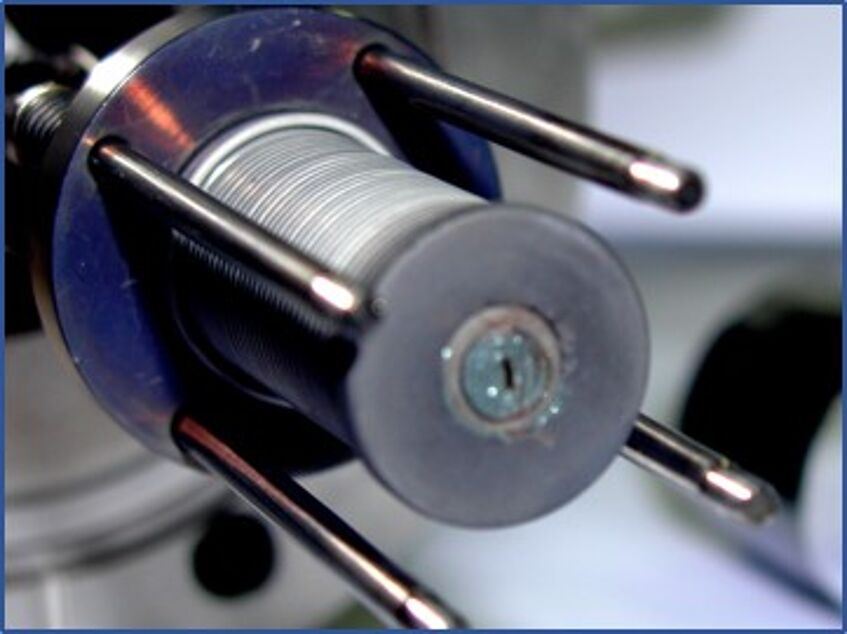Thermal beams: effusive sources

Thermal beams: effusive sources
Atoms and thermostable molecules can be launched by heating in a resistively heated ceramic cell. Temperatures may range from about 500 K for vitamins to 900 K for intense fullerene beams.
For an ideal gas we would expect a Maxwell-Boltzmann distribution whose most probable velocity is determined by the energy balance kBT=mvmp2/2. For molecules in the mass range of 500-1000 amu and temperatures in ranging between 500-1000 K this corresponds to de Broglie wavelengths around λdB=3-6 pm. This is about 200-400 times smaller than the molecular diameter and about 1 Million times smaller than the transverse coherence that we prepare by passing the molecules through suitable apertures, further downstream.
Real sources have interactions between the molecules and are usually slighly faster than expected for purely effusive sources. The source orifice measures typically 1 x 0.2 mm to be compatible with the geometry of our near-field interferometers.
Effusive sources are capable of ejecting thermally stable molecules at moderate forward velocity but high internal temperature, which we always assume to be equilibrated with the source temperature.
In the past, effusive sources have served in almost all KDTL interferometer experiments. We were able to use this method even for surprisingly massive particles, such as perfluoroalkyl-functionalized tetraphenylporphyrins. This molecules, synthesized in the group of Marcel Mayor in Basel, is designed to have low intermolecular binding and a low polarizability-to-mass-ratio.
Thermal sources still cover a surprisingly large range of molecules such as
- Functionalized tri-peptides:
Schätti, U. Sezer, S. Pedalino, J.P. Cotter, M. Arndt, M. Mayor, V. Köhler, - Vitamins:
Lukas Mairhofer, Sandra Eibenberger, Joseph P. Cotter, Marion Romirer, A. Shayeghi, and Markus Arndt
Quantum-assisted metrology of neutral vitamins in the gas-phase
Angew. Chem. Int. Ed. 56, 1-6 (2017), DOI: 10.1002/anie.201704916 - Porphyrins and related biodyes
S. Eibenberger, S. Gerlich, M. Arndt, J. Tüxen and M. Mayor
Electric moments in molecule interferometry
New J. Phys. 13, 043033 (2011) - Functionalized organic molecules, e.g.
J. Tüxen, S. Gerlich, S. Eibenberger, M. Arndt and M. Mayor
Quantum interference distinguishes between constitutional isomers
Chem. Comm. 46, 4145 -4147 (2010) - Fullerenes C60 and C70:
Sandra Eibenberger, Xiaxi Cheng, J.P. Cotter, Markus Arndt
Absolute absorption cross sections from photon recoil in a matter-wave interferometer
Phys. Rev. Lett. 112, 250402 (2014).
